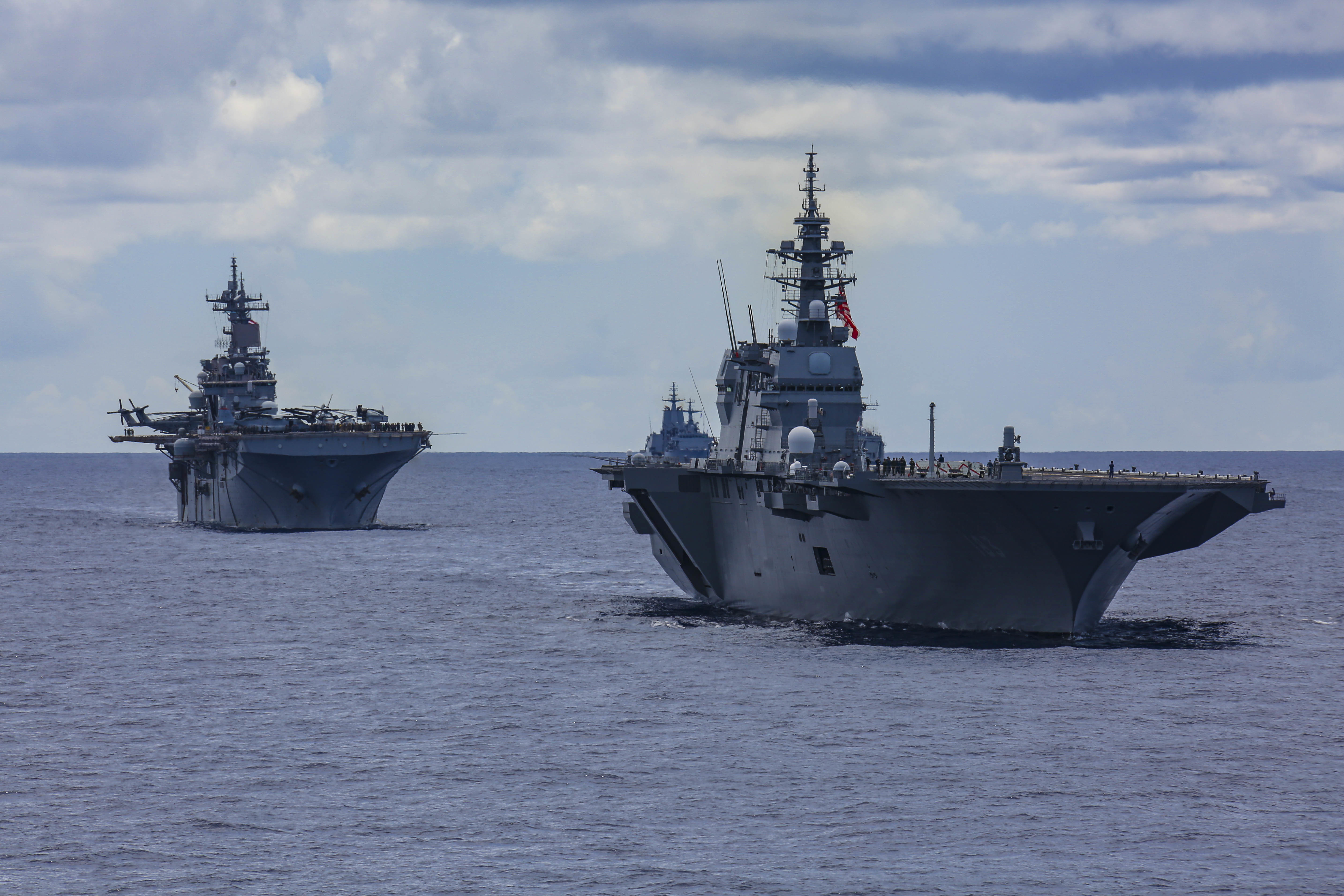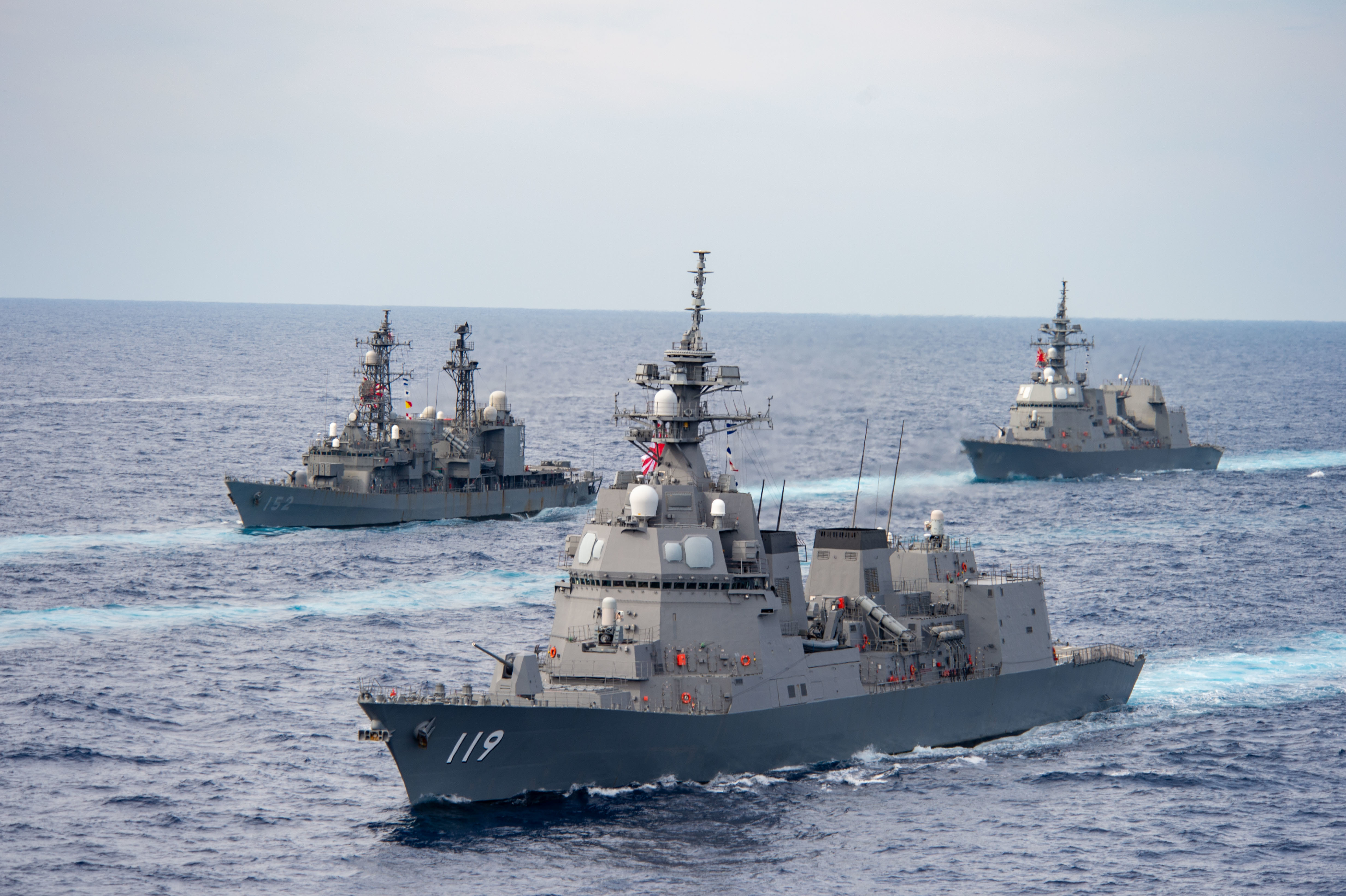
As Japan’s new defense chief, Yasukazu Hamada plans to improve Japan’s defense posture and capabilities, he said Wednesday.
The Chinese military’s recent activities, combined with their lack of transparency regarding national defense policies and military capabilities, have become a major security concern for Japan, countries in the region and the international community, Hamada said.
The first task for the defense minister, on the list given to him by Prime Minister Fumio Kishida, is to ensure that the Defense Ministry implements national security policies in a more strategic and systematic manner under the National Security Council and in cooperation with relevant ministers, Hamada said during his inaugural press conference at the Ministry of Defense.
“With regard to the National Security Strategy, the National Defense Program Guidelines, and the Mid-Term Defense Buildup Plan, which are the foundations of the plan, we will work together with the relevant ministers to revise them in light of the severe security environment surrounding our country, and drastically improve our defense capabilities within five years,” Hamada said.
All options are under consideration, including “counterattack capabilities,” which has been controversial due to Japan’s longstanding policy of only having defensive military capabilities, Hamada said. By the end of the year, the Ministry of Defense will finish assessing actions it could take to strengthen Japan’s defense capabilities.
Other focus areas for the MoD include securing its munitions and ammunition supply, research and development of military technology, strengthening the defense production and technological base and addressing public concerns on the reorganization and activities of U.S military forces in Japan.
Japan will further strengthen the deterrence and response capabilities of the Japan-United States alliance by expanding and deepening security and defense cooperation between the two countries, Hamada said, adding the need stems from the increasing severity of the regional security situation.
With the Japan-U.S. Alliance as the cornerstone, the Japanese military will carry out joint training and equipment/technical cooperation with Australia, India, the Association of Southeast Asian Nations, Europe, Pacific island countries and others to maintain a “free and open Indo-Pacific,” Hamada said.

The Japanese defense minister said there is no change to Japan’s policy that the Taiwan issue should get resolved through peaceful dialogue. But he acknowledged that in recent years, as China has rapidly strengthened its military power, the military balance between China and Taiwan has changed in a direction more favorable to China with the gap widening each year.
China’s military activities are concerning on the regional and international front, Hamada said. Japan will continue monitoring and surveilling Chinese military activities, and take all measures to prepare to respond to developments in regard to the Taiwan issue.
Military strength is concentrated in the vicinity of Japan, with neighboring countries like China strengthening their military power and intensifying their military activities, Hamada said. This is an urgent issue for Japan, particularly with the Chinese military recently conducting large-scale military exercises around Taiwan, and launching ballistic missiles in training waters set up near Japan.
In line with the goal of strengthening defense in the southwest region, Japan has so far deployed units to Yonaguni Island, Amami Oshima Island, and Miyako Island, and will also deploy units to Ishigaki Island within this fiscal year. Four anti-aircraft units operating the Patriot system have been deployed to the southwest region, mainly in Naha, to respond to various airborne threats, including ballistic missiles, said Hamada.
This is Hamada’s second time in the defense minister position, as he previously served as from September 2008 to September 2009. He replaced Nobuo Kishi this week due to Kishi’s undisclosed health condition – which saw him confined to a wheelchair – and the controversies surrounding the links between Kishi and other Japanese politicians, including his late brother, former Prime Minister Shinzo Abe, and political funding support from the Unification Church. Abe’s assassination reportedly highlighted ties between Japanese politicians and the Unification Church. Kishi was appointed as an adviser to Prime Minister Kishida.
Meanwhile, Japan’s Indo-Pacific Deployment 2022 (IPD22) mission continues steadily with a flurry of activities.
5 AUG, JS IZUMO conducted a goodwill exercise with ARM BENITO JUAREZ and ARM USUMACINTA.#JMSDF will continue to promote mutual understanding with Mexican Navy and contribute to realizing a #FreeandOpenIndoPacific.
🇲🇽⚓️🇯🇵#IPD22 #FOIP pic.twitter.com/C63Xl3TO7W— Japan Maritime Self-Defense Force (@jmsdf_pao_eng) August 8, 2022
The first surface unit of IPD22, which includes helicopter destroyer JS Izumo (DDH-183) and destroyer JS Takanami (DD-110), conducted a number of exercises after completing its participation in the Rim of the Pacific 2022 exercise and its departure from Hawaii. On Aug. 5, Izumo conducted a goodwill exercise with the Mexican Navy contingent participating in RIMPAC, frigate ARM Juárez (POLA-101) and landing ship tank ARM Usumacinta (A412), while Takanami performed a goodwill exercise with Chilean Navy frigate Almirante Lynch (FF07) the same day.
On Sunday, both Japanese ships then conducted replenishment exercises with replenishment ship USNS Pecos (T-AO‑197), followed by a Tuesday exercise with Royal Canadian Navy frigate HMCS Winnipeg (FFH338) and Royal New Zealand Navy replenishment ship HMNZS Aotearoak. Both the Canadian frigate and New Zealand replenishment ship also participated in RIMPAC. Winnipeg deployed with frigate HMCS Vancouver (FFH331) for RIMPAC, and both Canadian ships are now headed west to the Indo-Pacific for separate deployments to the region.
9 AUG, #IPD22 the first surface unit🇯🇵 conducted a trilateral exercise with @RoyalCanNavy🇨🇦and @NZNavy🇳🇿.#JMSDF will continue to strengthen cooperation with concerning countries in order to realize a #FreeandOpenIndoPacific.
🇨🇦⚓️🇳🇿⚓️🇯🇵#FOIP #JMSDF70th pic.twitter.com/YyEgfpWZk8— Japan Maritime Self-Defense Force (@jmsdf_pao_eng) August 11, 2022
The second surface unit of the IPD22 deployment, destroyer JS Kirisame (DD-104), is currently operating in the Pacific Islands. On Monday, Kirisame conducted a Japan-U.S.-Solomon Islands goodwill exercise with Royal Solomon Island Police Force patrol boat RSIPV Taro (06) and Littoral Combat Ship USS Oakland (LCS-24). A Japan-U.S. bilateral exercise with Oakland also took place in the vicinity of Solomon Islands. Kirisame arrived in Vanatu on Thursday for a port visit.
United Kingdom Royal Navy Offshore Patrol Vessel HMS Spey (P234), currently in Fiji, is conducting various taskings in the region, including assisting Pacific Islands nations in countering illegal fishing and criminal activities.
SPEY was treated to amazing views of Vanuatu this morning, where she is providing support to Maritime Security and helping to counter illegal, unreported and unregulated fishing. pic.twitter.com/myaKDZqVc9
— HMS Spey (@HMS_Spey) August 9, 2022
Spey’s sister ship, HMS Tamar (P233), is operating in the South China Sea, after making a port visit to Manila on Wednesday. Royal Australian Navy frigate HMAS Perth (FFH157) is also in the South China Sea having after docking on Tuesday at Royal Malaysian Navy base Kota Kinabalu.
Royal Australian Navy destroyer HMAS Sydney (DDG42) is also in the region, while the RAN RIMPAC contingent that includes landing helicopter dock HMAS Canberra (L02), frigate HMAS Warramunga (FFH152) and replenishment ship HMAS Supply (A195) are now heading back to the Indo-Pacific.





